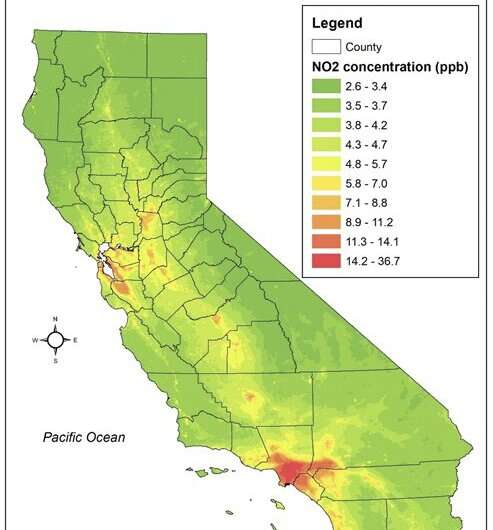This article has been reviewed according to Science X's editorial process and policies. Editors have highlighted the following attributes while ensuring the content's credibility:
fact-checked
peer-reviewed publication
trusted source
proofread
The hidden culprit behind nitrogen dioxide emissions

Nitrogen dioxide is one of the criteria air pollutants that plays an important role as a precursor gas of fine particulate matter and ozone. NO2 emissions are known to be primarily generated by industrial facilities or vehicle exhausts. Recently, a research team from POSTECH analyzed satellite remote sensing data from the European Space Agency (ESA) and released results showing that food processing facilities and high-rise apartments that are 10 stories or higher are significant sources of NO2 emissions. Their findings have drawn attention from NASA.
A POSTECH research team led by Professor Hyung Joo Lee used the TROPOspheric Monitoring Instrument (TROPOMI), an instrument on an Earth observation satellite that can monitor atmospheric composition, to analyze NO2 emissions from various types of properties in California. Their analysis suggests that NO2 emissions were highest at food processing facilities and residential complexes with high population density. The research was published in Science of the Total Environment.
The team estimated average NO2 concentrations at the spatial resolution of 500m in California between 2018 and 2019 and assessed whether NO2 concentrations measured at ground monitors were representative of population exposures to NO2 in each county. They also evaluated which property types showed the highest NO2 emissions and therefore exposures. Their assessment revealed that the highest NO2 exposures were attributed to food processing facilities and high-rise apartments that are 10 stories or higher. The same results were obtained when traffic was taken into consideration.
Such high residential emissions are presumed to be attributed to combustion sources within the apartments, such as water boilers, space heaters, and other indoor-generated emissions vented outdoors. Residential combustion sources have not been considered significant sources of air pollution in previous research.
POSTECH Professor Hyung Joo Lee explained, "Highly populated residential areas, specifically high-rise apartments, have not been extensively studied. However, the research indicates that these areas should be regarded as crucial contributors to NO2 emissions in the formulation of environmental policies."
He emphasized the significance of the research by stating, "The research demonstrates that satellite remote sensing can be effectively used to inform air quality management."
More information: Hyung Joo Lee et al, Neighborhood-scale ambient NO2 concentrations using TROPOMI NO2 data: Applications for spatially comprehensive exposure assessment, Science of The Total Environment (2022). DOI: 10.1016/j.scitotenv.2022.159342
Journal information: Science of the Total Environment
Provided by Pohang University of Science and Technology




















